Évaluer la pertinence de la gestion durable des terres pour l’adaptation au changement climatique
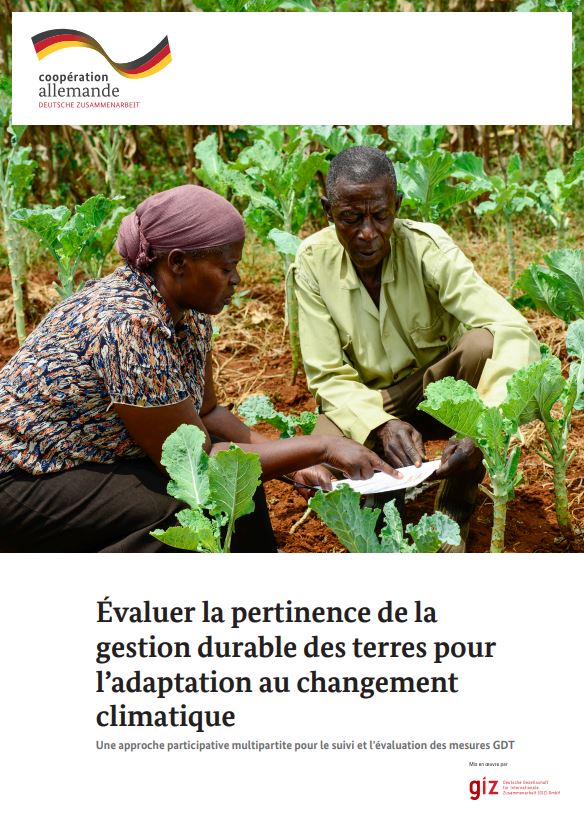
Les technologies pour la gestion durable des terres (GDT) ont souvent plusieurs avantages, notamment pour l’atténuation et pour l’adaptation au changement climatique. De plus, elles soutiennent les objectifs des producteurs et productrices en matière d’augmentation et de sécurisation des rendements.
Ce guide et l’outil Excel présentent une méthode participative pour identifier les risques climatiques pertinents et pour évaluer dans quelle mesure les technologies GDT répondent à ces risques, ainsi que leur faisabilité au niveau local.
Assessing the adaptation relevance of soil protection and rehabilitation
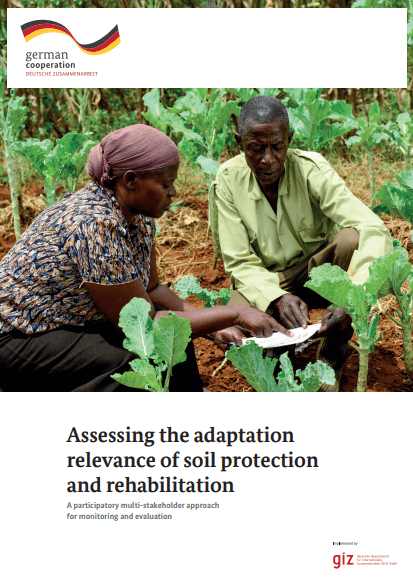
Soil protection and rehabilitation (SPR) technologies often provide several advantages, including benefits for mitigation and adaptation, while supporting farmers’ goals to boost and secure their yields. This guide and Excel-based tool provide a participatory method for identifying relevant climate risks and assessing how well SPR technologies address such risks along with their local feasibility.
Implementing the Commitments Related to Addressing Human Mobility in the Context of Disasters, Climate Change and Environmental Degradation – A Baseline Analysis Report Under the Global Compact Safe, Orderly and Regular Migration
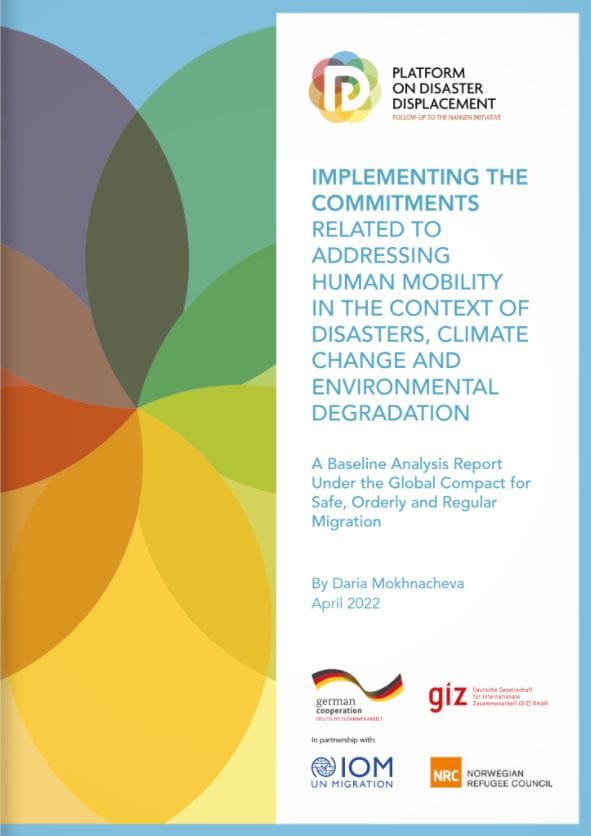
The Global Compact for Safe, Orderly and Regular Migration (GCM) is a non-binding agreement comprising comprehensive commitments for governing international migration under the obligations and principles of international law. To support an effective implementation process, this report reviews existing policies and legal instruments on regional and national level governing migration in the context of disasters, climate change and environmental degradation.
Human Mobility in the Context of Disasters, Climate Change and Environmental Degradation – Ten Insights from the GCM Baseline Mapping Report
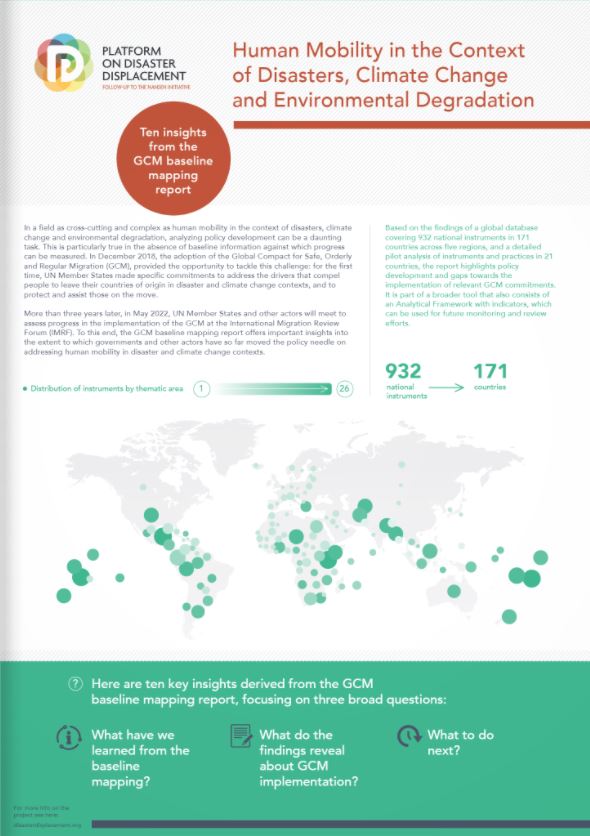
The Global Compact for Safe, Orderly and Regular Migration (GCM) includes commitments addressing migration induced by disasters, the adverse effects of climate change and environmental degradation. Goals 2, 5, 21 and 23 of the GCM are of particular relevance within this context. To be effective, adequate incorporation of the commitments in national and regional policies and legislation is needed. The GCM lacks a comprehensive monitoring and reporting framework to track and evaluate the implementation process. Therefore, the Global Compact for Migration Baseline Analysis Report reviews existing policies and legal instruments on regional and national level governing migration in the context of disasters, climate change and environmental degradation. This fact sheet summarizes ten key insights derived from the report.
Guia para Monitoramento e Avaliação de Intervenções de Adaptação baseada em Ecossistemas

O Guia para Monitoramento e Avaliação (M&A) de medidas de Adaptação baseada em Ecossistemas (AbE) fornece uma descrição detalhada do processo para planejamento e implementação de M&A e medição de seus resultados e a eficácia da intervenção para AbE aplicada.
Vers l’opérationnalisation d’un système national de suivi-évaluation des actions climatiques au Burkina Faso
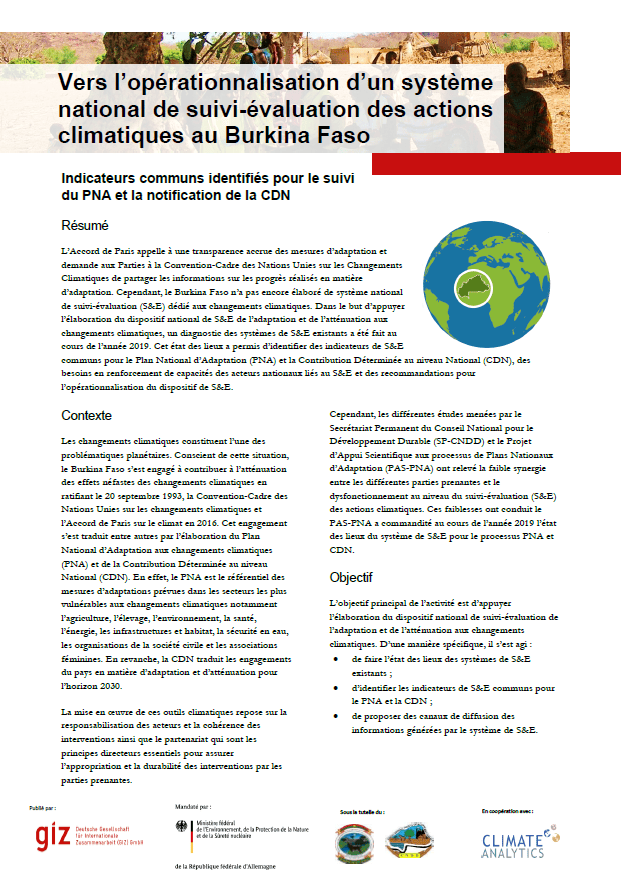
Dans le but d’appuyer l’élaboration du dispositif national de S&E de l’adaptation et de l’atténuation aux changements climatiques, un diagnostic des systèmes de S&E existants a été fait au cours de l’année 2019. Cet état des lieux a permis d’identifier des indicateurs de S&E communs pour le Plan National d’Adaptation (PNA) et la Contribution Déterminée au niveau National (CDN), des besoins en renforcement de capacités des acteurs nationaux liés au S&E et des recommandations pour l’opérationnalisation du dispositif de S&E.
Introducing the Guidebook for Monitoring and Evaluating Ecosystem-based Adaptation
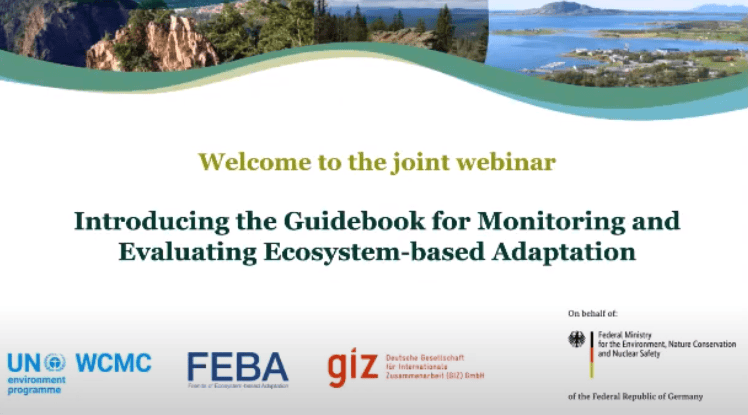
The GIZ Global Project Mainstreaming EbA, the UN Environment Programme World Conservation Monitoring Centre (UNEP-WCMC) and the Friends of EbA (FEBA) network are happy to share the recording of the free and public online session.
Monitoring and evaluation of adaptation – an introduction (Adaptation Briefings)
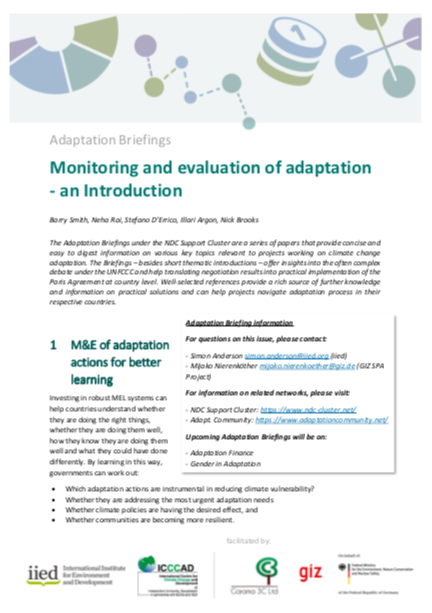
This briefing guides its reader through the complex subject of Monitoring, Evaluation and Learning (MEL) of Adaptation. It gives an overview about the benefits of investing in MEL and provides current challenges. It explains what you need to know about the debate on M&E and transparency under the Paris Agreement and Katowice and offers a rich list of further literature and practical solutions.
Framing and Tracking 21st Century Climate Adaptation: Monitoring, Evaluation and Learning for Paris, the SDGs and Beyond
The Paris Agreement frames adaptation in terms of the actions needed to address the impacts of a global warming of 1.5–2°C. However, current trends suggest that warming is likely to exceed 2° degrees by the middle of the 21st century, which makes incremental approaches beyond 2030 necessary.
Evaluación de impactos de la Adaptación basada en Ecosistemas en Miraflores, Perú
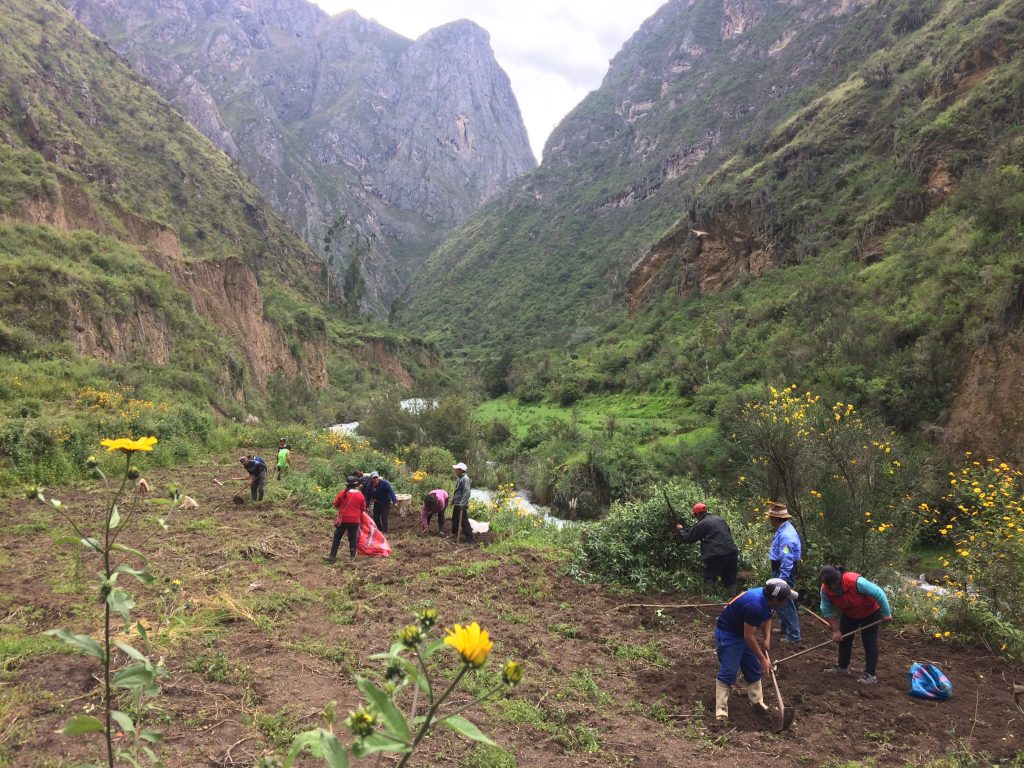
Esta visión general de la investigación resume los mensajes clave obtenidos de un estudio de caso sobre AbE en los Andes peruanos durante el proyecto AbE Montaña en Miraflores, que tenía como objetivo mejorar la gestión de los recursos naturales en los pastos y humedales locales de montaña con un enfoque en organización comunitaria. La autora muestra cómo se pueden utilizar varios indicadores y marcos de monitoreo para mostrar la eficacia de AbE.
